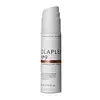What's inside
What's inside
 Key Ingredients
Key Ingredients

 Benefits
Benefits

 Concerns
Concerns

 Ingredients Side-by-side
Ingredients Side-by-side

Water
Skin ConditioningPropanediol
SolventBetaine
HumectantQuaternium-22
Bis-Aminopropyl Diglycol Dimaleate
Skin ConditioningSodium Hyaluronate
HumectantCetrimonium Chloride
AntimicrobialPanthenol
Skin ConditioningHydroxyethylcellulose
Emulsion StabilisingPvp
Emulsion StabilisingGuar Hydroxypropyltrimonium Chloride
Skin ConditioningFurcellaria Lumbricalis Extract
Skin ConditioningPelvetia Canaliculata Extract
Skin ProtectingXylitylglucoside
HumectantPolyquaternium-44
Anhydroxylitol
HumectantMaltitol
HumectantCitric Acid
BufferingTrisodium Ethylenediamine Disuccinate
Xylitol
HumectantEthylhexylglycerin
Skin ConditioningSodium Hydroxide
BufferingSorbic Acid
PreservativePhenoxyethanol
PreservativeSodium Benzoate
MaskingParfum
MaskingCitral
PerfumingCitronellol
PerfumingHexyl Cinnamal
PerfumingLimonene
PerfumingLinalool
PerfumingWater, Propanediol, Betaine, Quaternium-22, Bis-Aminopropyl Diglycol Dimaleate, Sodium Hyaluronate, Cetrimonium Chloride, Panthenol, Hydroxyethylcellulose, Pvp, Guar Hydroxypropyltrimonium Chloride, Furcellaria Lumbricalis Extract, Pelvetia Canaliculata Extract, Xylitylglucoside, Polyquaternium-44, Anhydroxylitol, Maltitol, Citric Acid, Trisodium Ethylenediamine Disuccinate, Xylitol, Ethylhexylglycerin, Sodium Hydroxide, Sorbic Acid, Phenoxyethanol, Sodium Benzoate, Parfum, Citral, Citronellol, Hexyl Cinnamal, Limonene, Linalool
Water
Skin ConditioningAlcohol Denat.
AntimicrobialPropylene Glycol
HumectantPolysorbate 20
EmulsifyingSh-Oligopeptide-78
Hydrolyzed Wheat Protein
Skin ConditioningHydrolyzed Wheat Starch
Skin ConditioningAcrylates/C10-30 Alkyl Acrylate Crosspolymer
Emulsion StabilisingPhenoxyethanol
PreservativePotassium Sorbate
PreservativePotassium Hydroxide
BufferingParfum
MaskingGeraniol
PerfumingLinalool
PerfumingHexyl Cinnamal
PerfumingBenzyl Alcohol
Perfuming
 Reviews
Reviews

Ingredients Explained
These ingredients are found in both products.
Ingredients higher up in an ingredient list are typically present in a larger amount.
Hexyl Cinnamal is a fragrance ingredient with a similar scent to jasmine. It can be naturally found in chamomile essential oil.
This ingredient is a known EU allergen and may sensitize the skin. The EU requires this ingredient to be listed separately on an ingredients list.
Hexyl Cinnamal is not water soluble but is soluble in oils.
Learn more about Hexyl CinnamalLinalool is a fragrance and helps add scent to products. It's derived from common plants such as cinnamon, mint, citrus, and lavender.
Like Limonene, this ingredient oxidizes when exposed to air. Oxidized linalool can cause allergies and skin sensitivity.
This ingredient has a scent that is floral, spicy tropical, and citrus-like.
Learn more about LinaloolParfum is a catch-all term for an ingredient or more that is used to give a scent to products.
Also called "fragrance", this ingredient can be a blend of hundreds of chemicals or plant oils. This means every product with "fragrance" or "parfum" in the ingredients list is a different mixture.
For instance, Habanolide is a proprietary trade name for a specific aroma chemical. When used as a fragrance ingredient in cosmetics, most aroma chemicals fall under the broad labeling category of “FRAGRANCE” or “PARFUM” according to EU and US regulations.
The term 'parfum' or 'fragrance' is not regulated in many countries. In many cases, it is up to the brand to define this term.
For instance, many brands choose to label themselves as "fragrance-free" because they are not using synthetic fragrances. However, their products may still contain ingredients such as essential oils that are considered a fragrance by INCI standards.
One example is Calendula flower extract. Calendula is an essential oil that still imparts a scent or 'fragrance'.
Depending on the blend, the ingredients in the mixture can cause allergies and sensitivities on the skin. Some ingredients that are known EU allergens include linalool and citronellol.
Parfum can also be used to mask or cover an unpleasant scent.
The bottom line is: not all fragrances/parfum/ingredients are created equally. If you are worried about fragrances, we recommend taking a closer look at an ingredient. And of course, we always recommend speaking with a professional.
Learn more about ParfumPhenoxyethanol is a preservative that has germicide, antimicrobial, and aromatic properties. Studies show that phenoxyethanol can prevent microbial growth. By itself, it has a scent that is similar to that of a rose.
It's often used in formulations along with Caprylyl Glycol to preserve the shelf life of products.
Water. It's the most common cosmetic ingredient of all. You'll usually see it at the top of ingredient lists, meaning that it makes up the largest part of the product.
So why is it so popular? Water most often acts as a solvent - this means that it helps dissolve other ingredients into the formulation.
You'll also recognize water as that liquid we all need to stay alive. If you see this, drink a glass of water. Stay hydrated!
Learn more about Water